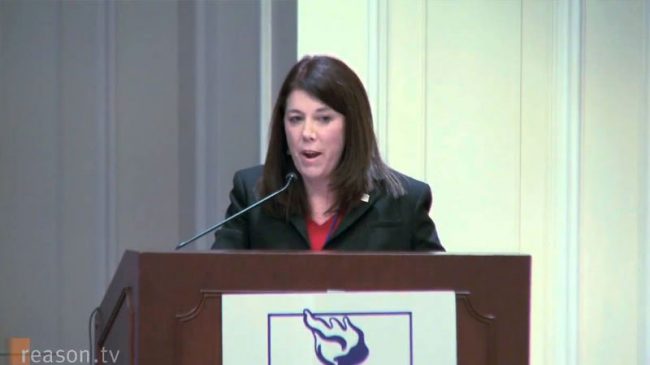LATimes Dust-Up Asks: Are they taking their fair share of special-ed and English-language learners? Ralph Shaffer and Lisa Snell debate. To read Shaffer’s response, go here.
Ralph, the way in which you analyze student subgroups at the school level by comparing them with district averages for subgroups is misleading. You assume that all district-run schools in Oakland actually match the district’s average demographics. This is not the case. There are many examples of district-run schools that are not racially integrated and have large populations of certain subgroups of students. Many schools have majority Latino or African American populations, or majority Asian or white populations. For example, at Hillcrest Elementary School, white students make up more than 65% of the enrollment; West Oakland Middle School is about 87% African American. The American Indian charter schools are actually more diverse than many of the district-run traditional schools.
Similarly, there are many examples of Oakland charter schools that serve higher percentages of English-language learners and economically disadvantaged students: Education for Change’s enrollment is 67% English-learners, Monarch’s is 68%, Lighthouse Community’s is 75%, and the Dolores Huerta Learning Academy’s is a whopping 99%. Ernestine Reems charter and the American Indian charter schools have almost 100% low-income students.
Special-ed is also difficult to evaluate at the school level. While some charters have below-the-district averages for special-ed students, so do many district-run schools. Other charter schools have higher percentages of special-ed students, such as Civicorps Elementary and North Oakland, both with 11%.
There is little evidence that charter schools are succeeding because they are educating higher-performing students. A March 2009 Rand Corp. study, “Charter Schools in Eight States: Effects on Achievement, Attainment, Integration, and Competition,” examined charters in Chicago, Denver, Milwaukee, Philadelphia, San Diego and the states of Florida, Ohio and Texas. It found that charter schools do not “skim” the top students away from traditional public schools. In fact, in many locations, students transferring to charter schools have below-average test scores. In addition, the Rand study found that charter transfers had surprisingly little effect on racial distributions of students. Typically, students transferring to charter schools moved to schools with racial distributions similar to those of the traditional public schools from which they came.
This is also true in Oakland. According to the Oakland Unified School District’s annual scorecard, overall charter enrollment in Oakland includes a higher percentage of both English-learners and Latino students. About 51% of the students enrolled in Oakland charter schools are Latino, and about 30% are English-learners; at district-run schools, about 34% of the students are Latino, and about 29% are English-learners. On average, English-learners in Oakland charters outperformed those in Oakland’s traditional public schools, 679 to 644, on the state’s Academic Performance Index in 2008.
This obsession with the minutia of student demographics at individual schools ignores the big picture of how charter schools have helped disadvantaged students.
The bottom line is that many urban school environments are not as racially integrated as some people might prefer. However, while racial integration may be one goal of public education, it should not overshadow actual achievement gains for disadvantaged children. Charter schools in Oakland outperformed that city’s traditional public schools in a number of disadvantaged subgroup populations, including Asian, socio-economically disadvantaged, African American, English-learners and Latinos.
Lisa Snell is director of education at Reason Foundation. This article was first published as part of an LATimes.com Dust-Up “The Great Charter School Debate.”

